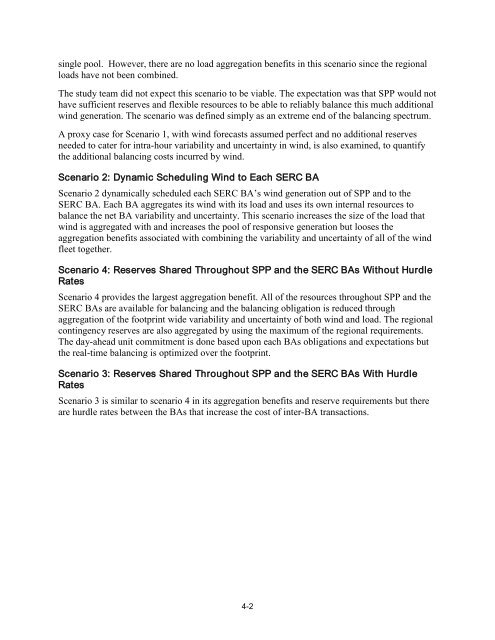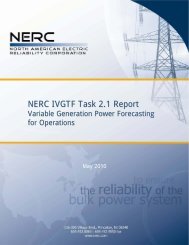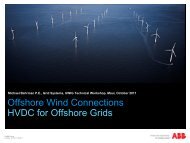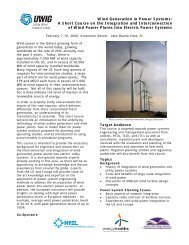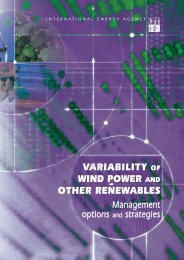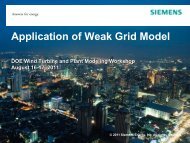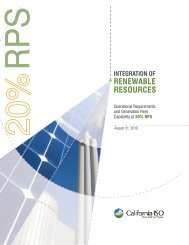Integrating Southwest Power Pool Wind to Southeast Electricity ...
Integrating Southwest Power Pool Wind to Southeast Electricity ...
Integrating Southwest Power Pool Wind to Southeast Electricity ...
Create successful ePaper yourself
Turn your PDF publications into a flip-book with our unique Google optimized e-Paper software.
single pool. However, there are no load aggregation benefits in this scenario since the regional<br />
loads have not been combined.<br />
The study team did not expect this scenario <strong>to</strong> be viable. The expectation was that SPP would not<br />
have sufficient reserves and flexible resources <strong>to</strong> be able <strong>to</strong> reliably balance this much additional<br />
wind generation. The scenario was defined simply as an extreme end of the balancing spectrum.<br />
A proxy case for Scenario 1, with wind forecasts assumed perfect and no additional reserves<br />
needed <strong>to</strong> cater for intra-hour variability and uncertainty in wind, is also examined, <strong>to</strong> quantify<br />
the additional balancing costs incurred by wind.<br />
Scenario 2: Dynamic Scheduling <strong>Wind</strong> <strong>to</strong> Each SERC BA<br />
Scenario 2 dynamically scheduled each SERC BA’s wind generation out of SPP and <strong>to</strong> the<br />
SERC BA. Each BA aggregates its wind with its load and uses its own internal resources <strong>to</strong><br />
balance the net BA variability and uncertainty. This scenario increases the size of the load that<br />
wind is aggregated with and increases the pool of responsive generation but looses the<br />
aggregation benefits associated with combining the variability and uncertainty of all of the wind<br />
fleet <strong>to</strong>gether.<br />
Scenario 4: Reserves Shared Throughout SPP and the SERC BAs Without Hurdle<br />
Rates<br />
Scenario 4 provides the largest aggregation benefit. All of the resources throughout SPP and the<br />
SERC BAs are available for balancing and the balancing obligation is reduced through<br />
aggregation of the footprint wide variability and uncertainty of both wind and load. The regional<br />
contingency reserves are also aggregated by using the maximum of the regional requirements.<br />
The day-ahead unit commitment is done based upon each BAs obligations and expectations but<br />
the real-time balancing is optimized over the footprint.<br />
Scenario 3: Reserves Shared Throughout SPP and the SERC BAs With Hurdle<br />
Rates<br />
Scenario 3 is similar <strong>to</strong> scenario 4 in its aggregation benefits and reserve requirements but there<br />
are hurdle rates between the BAs that increase the cost of inter-BA transactions.<br />
4-2


